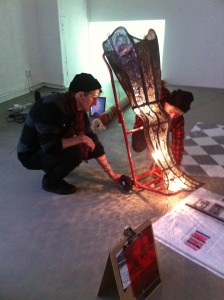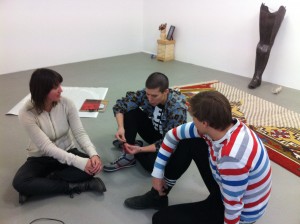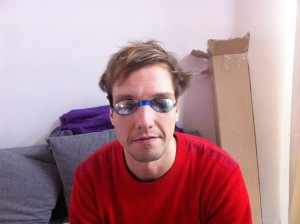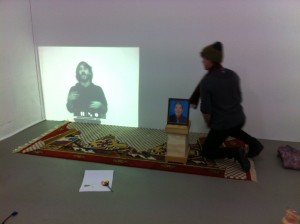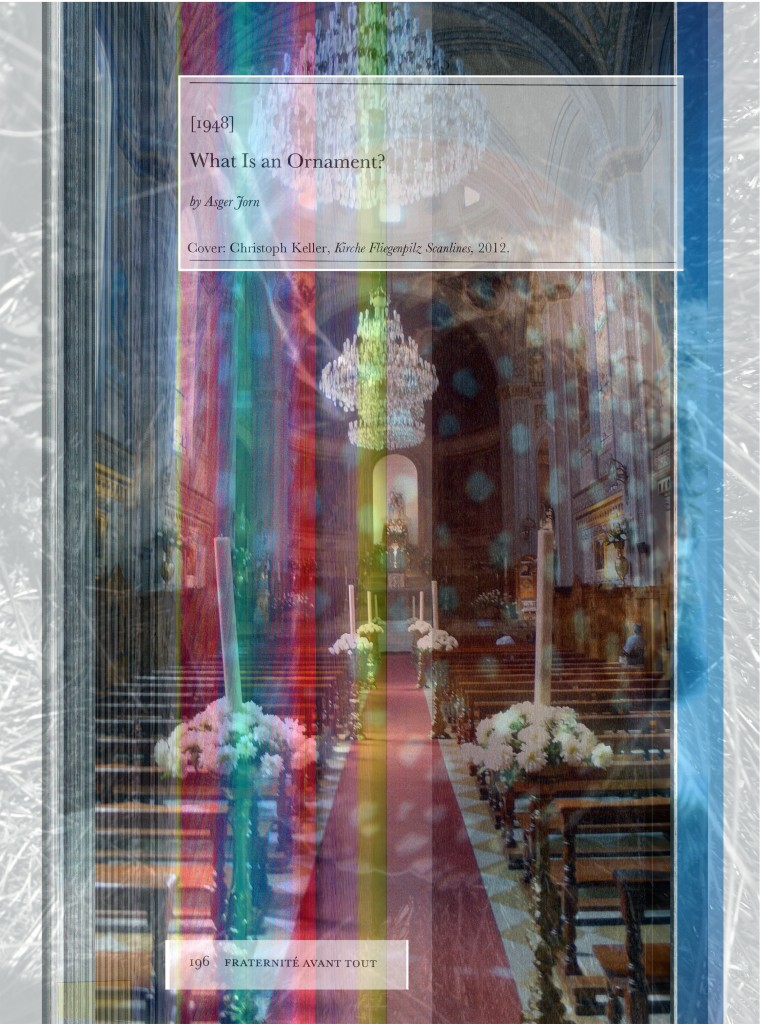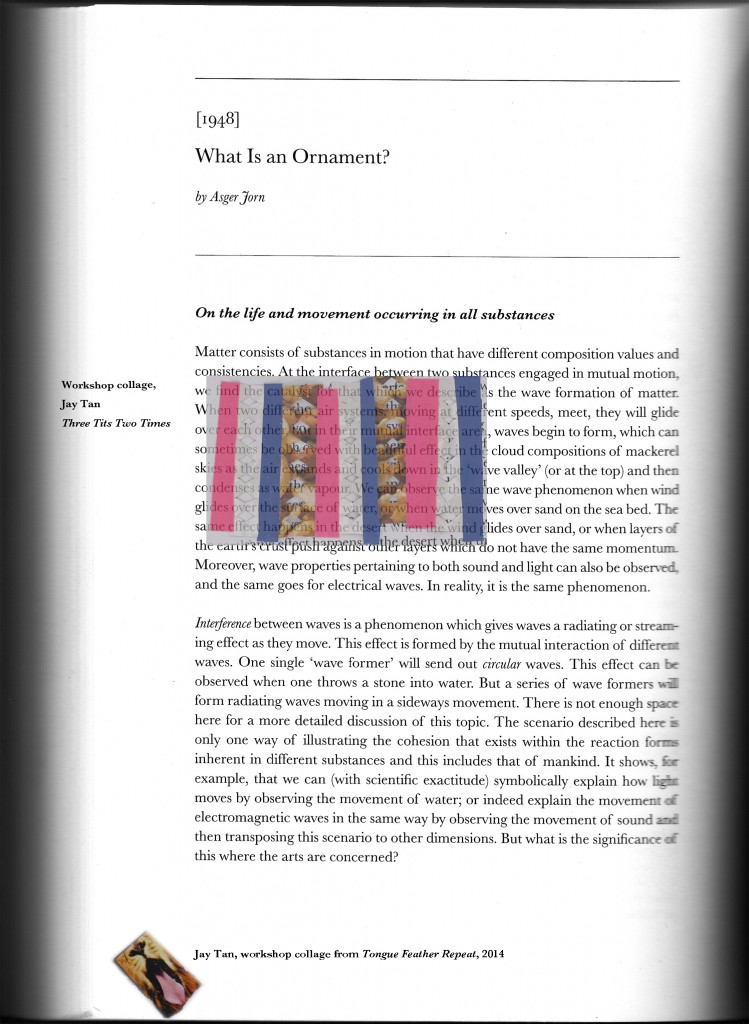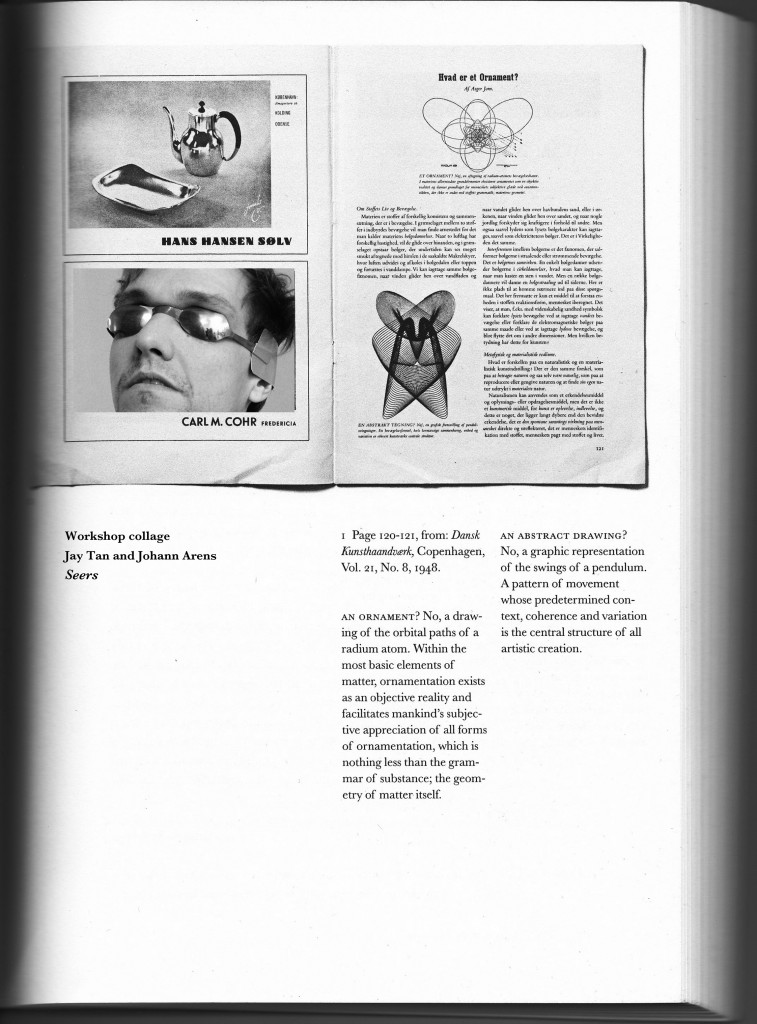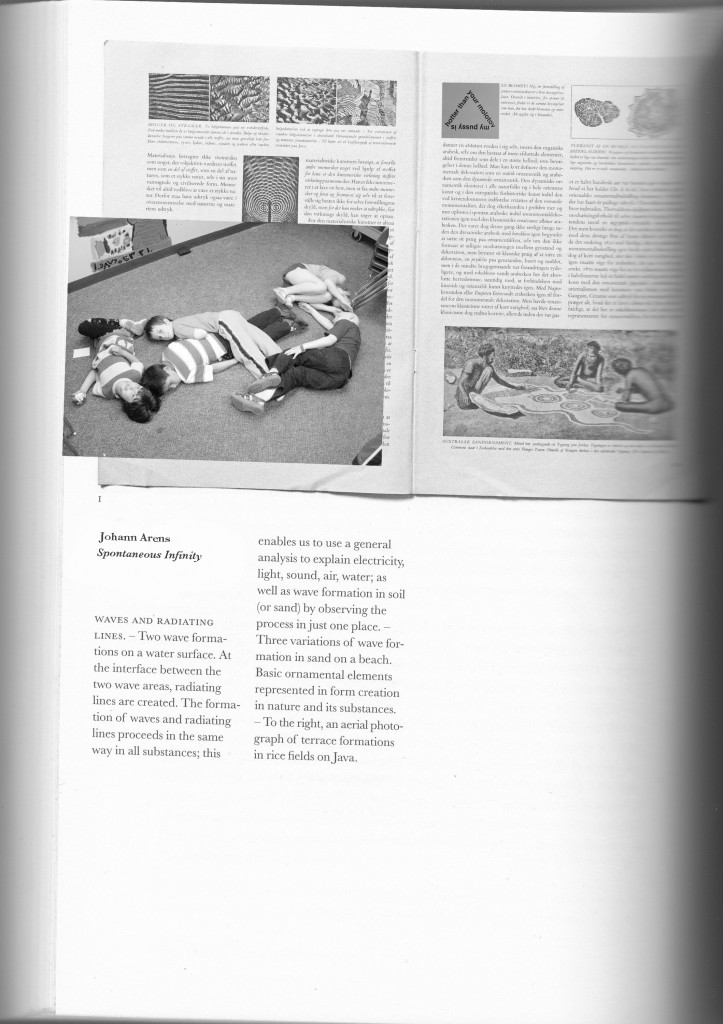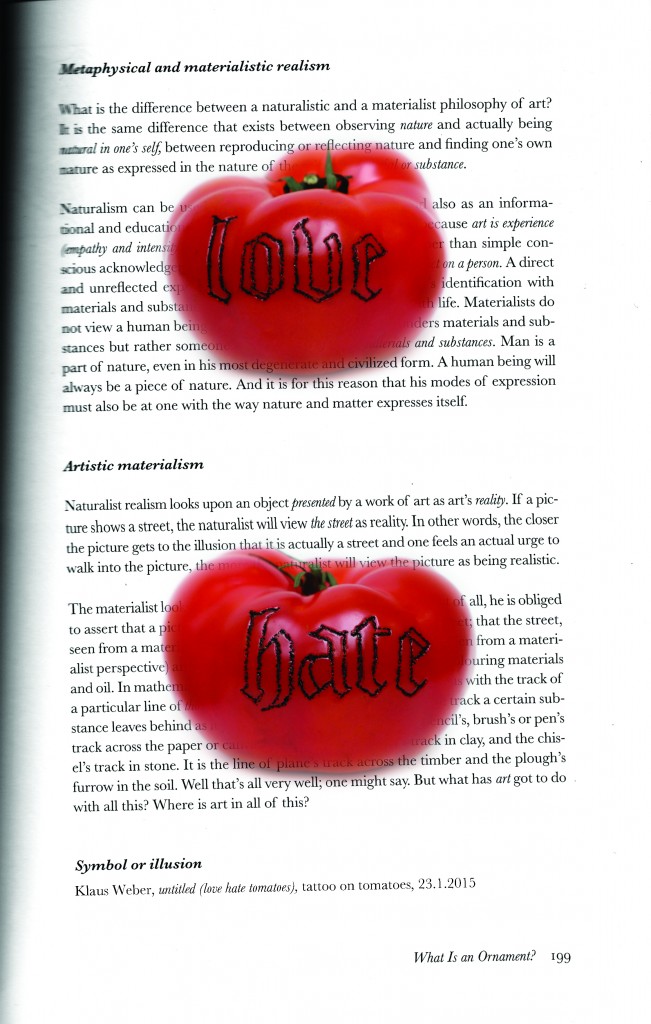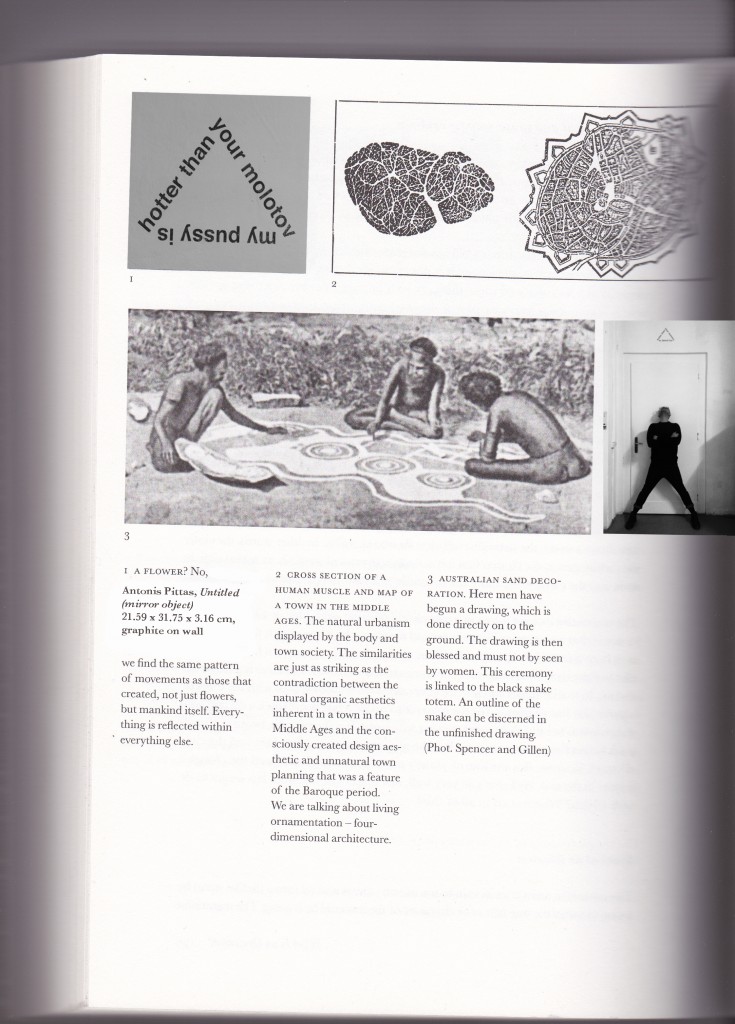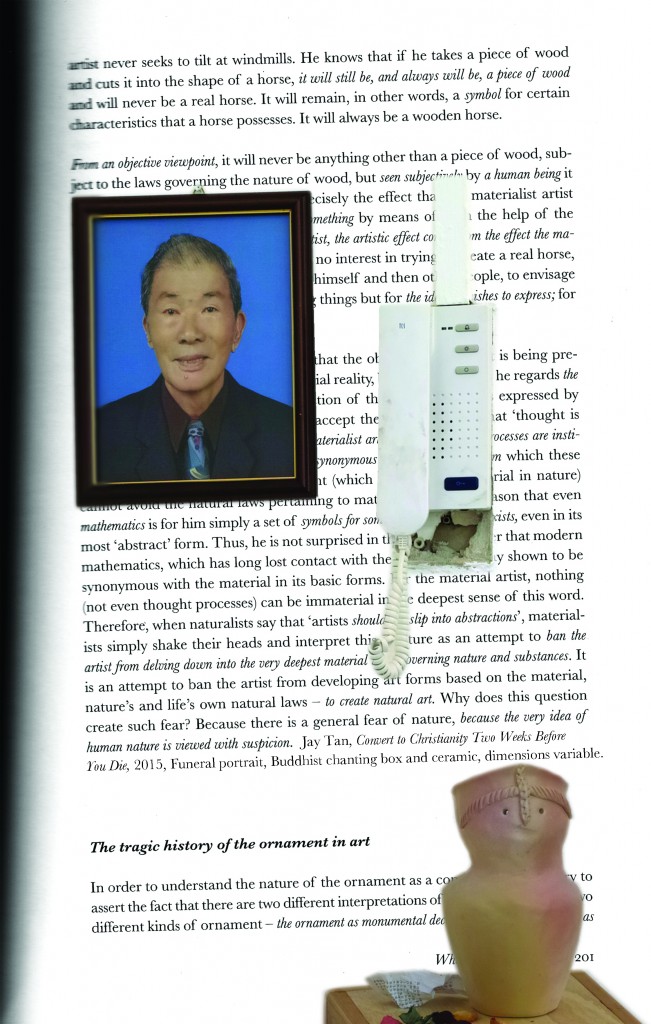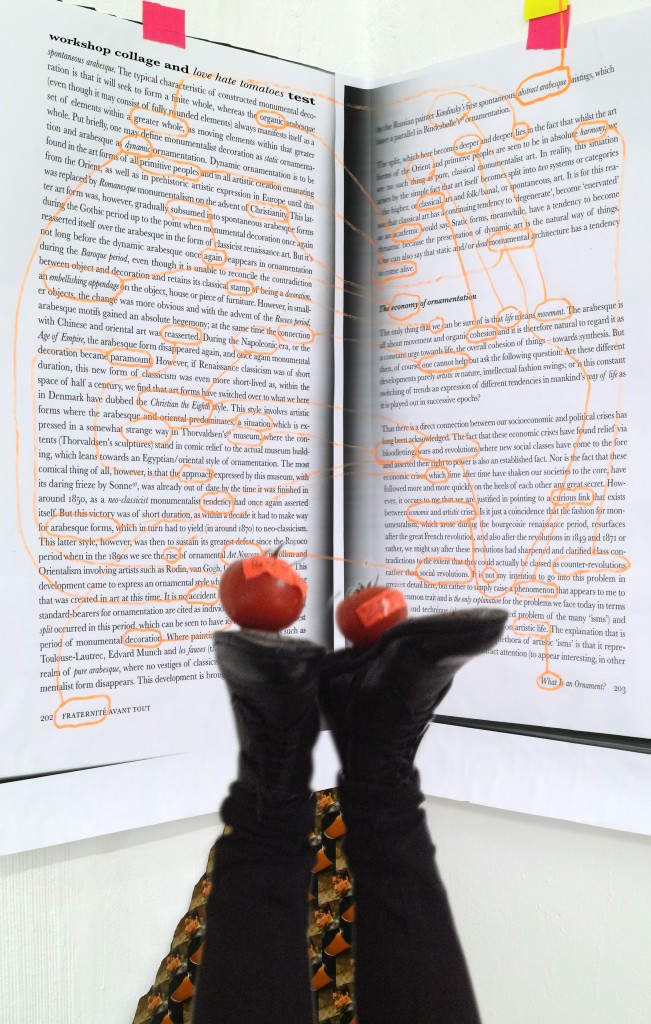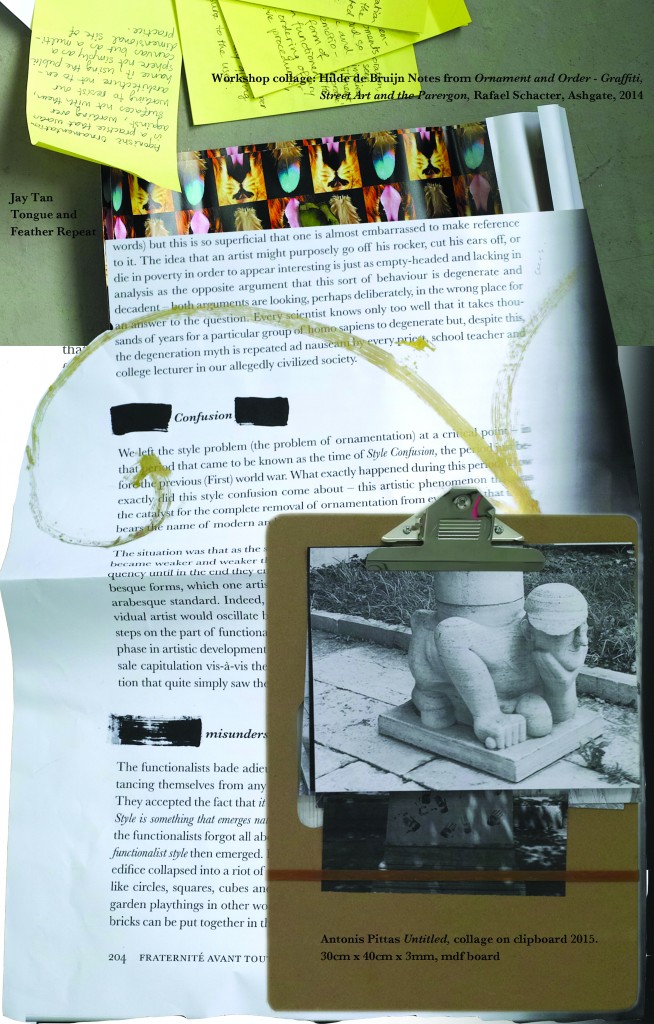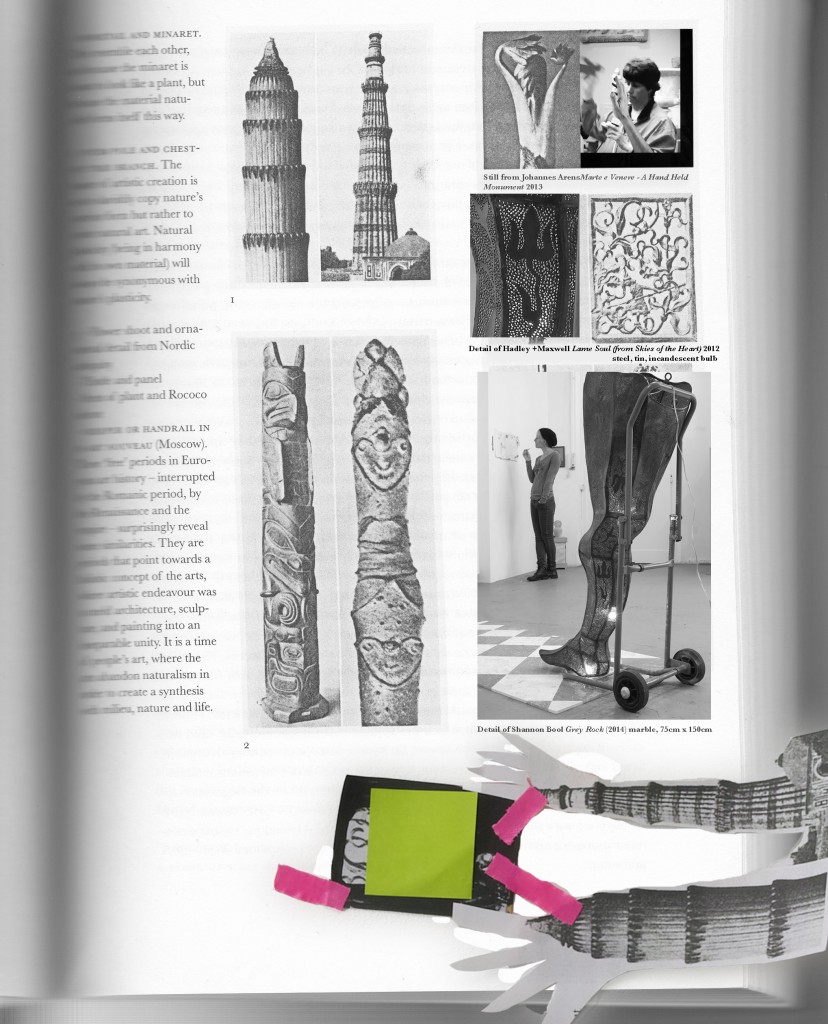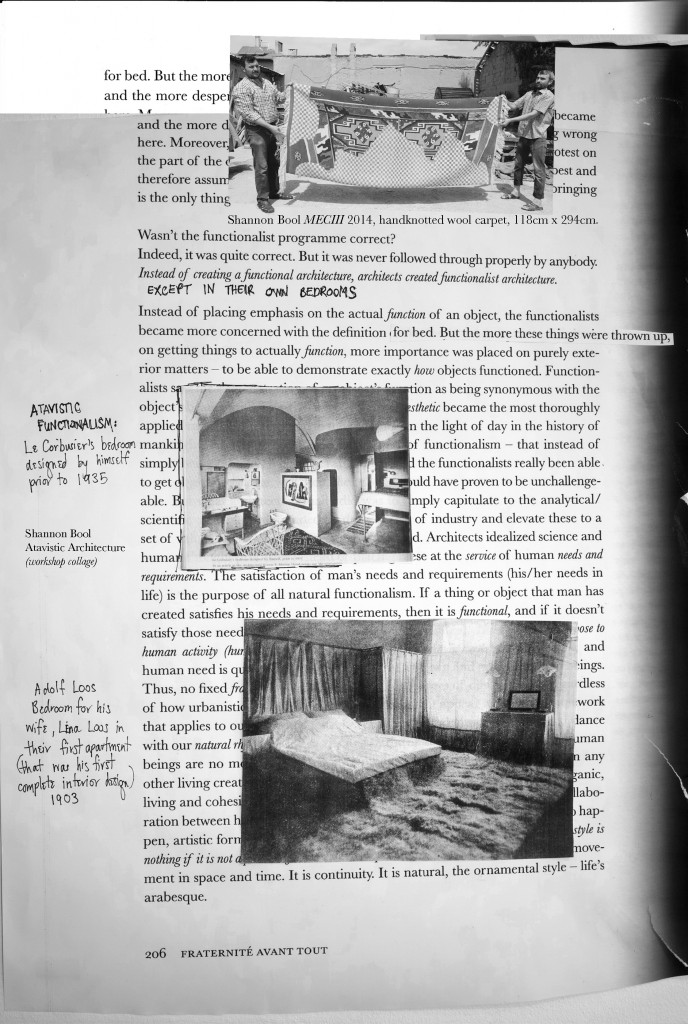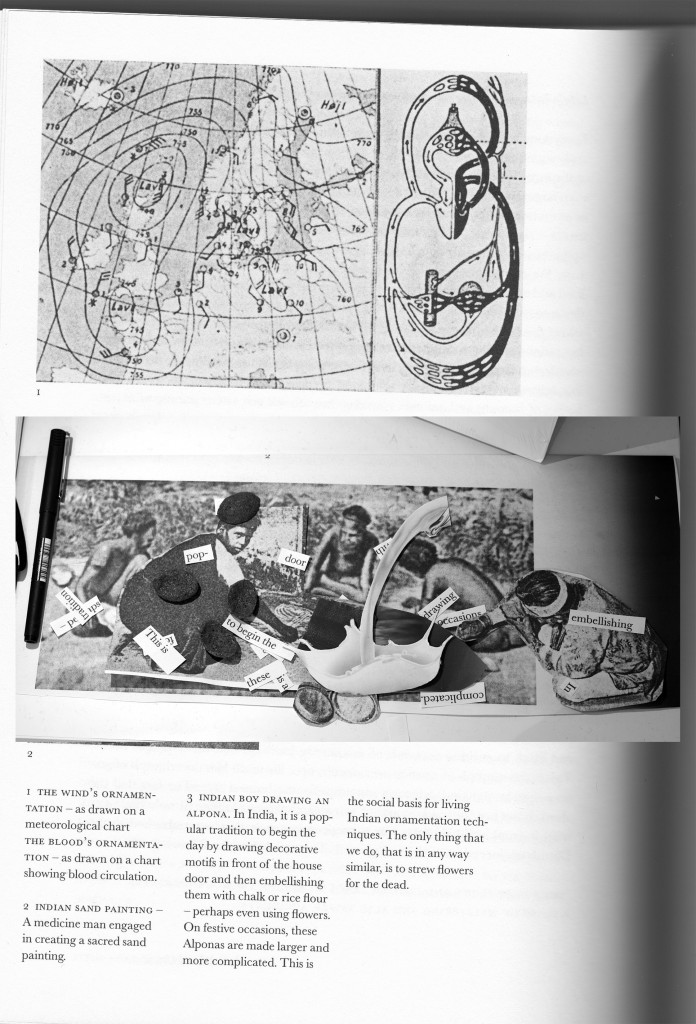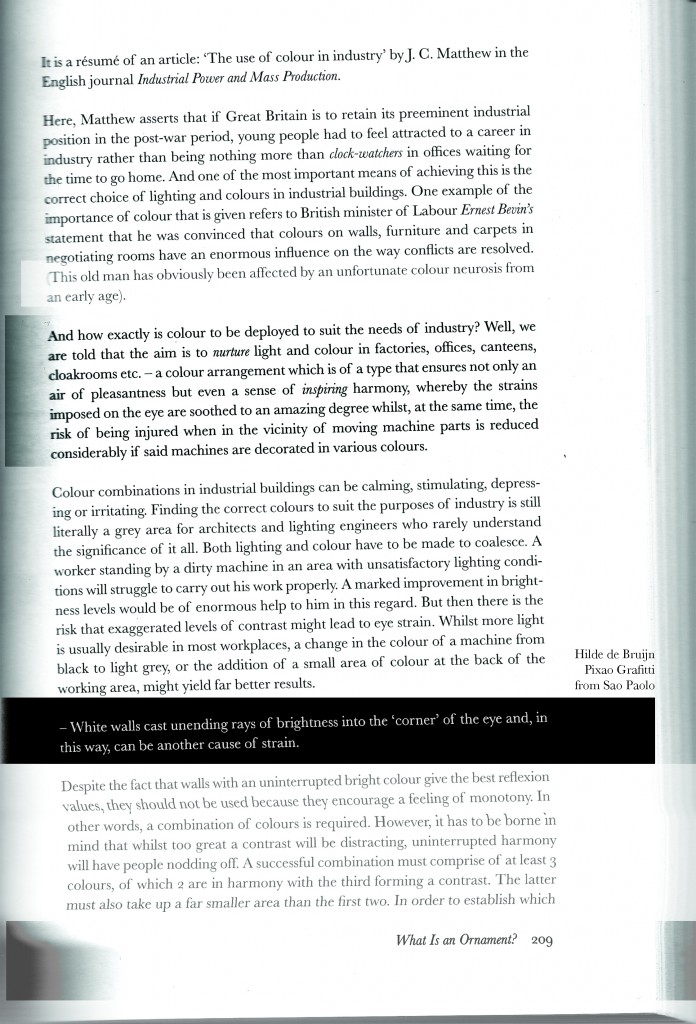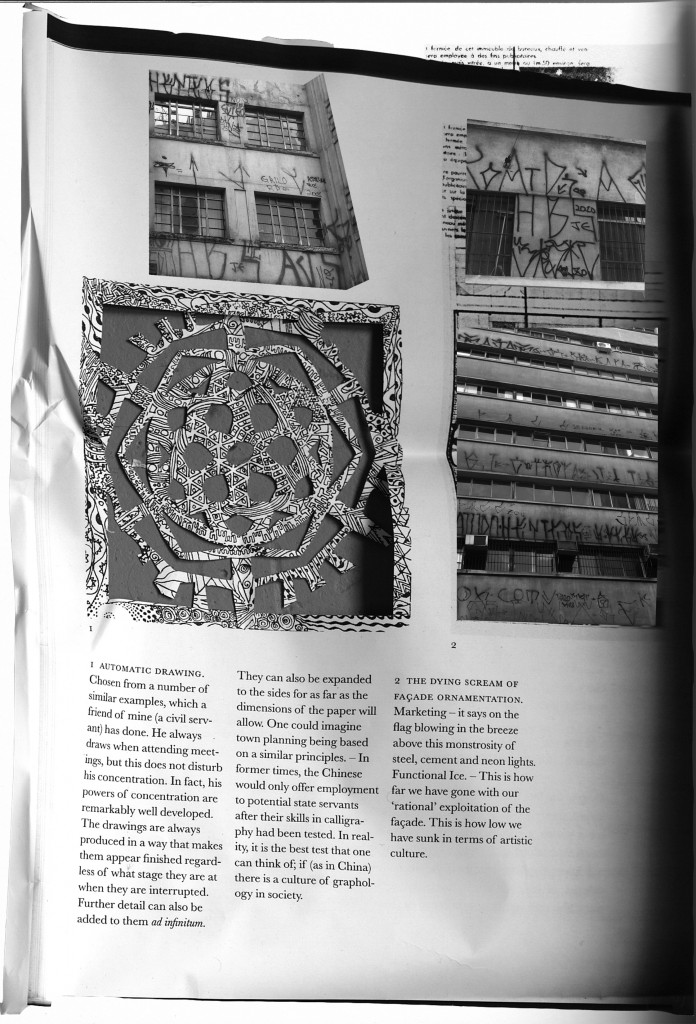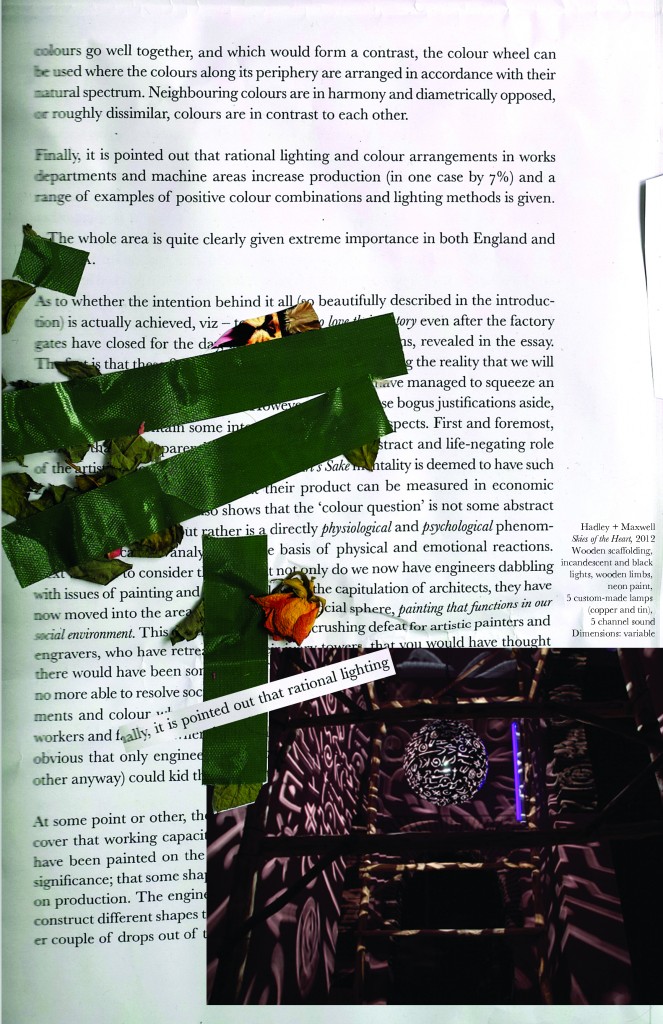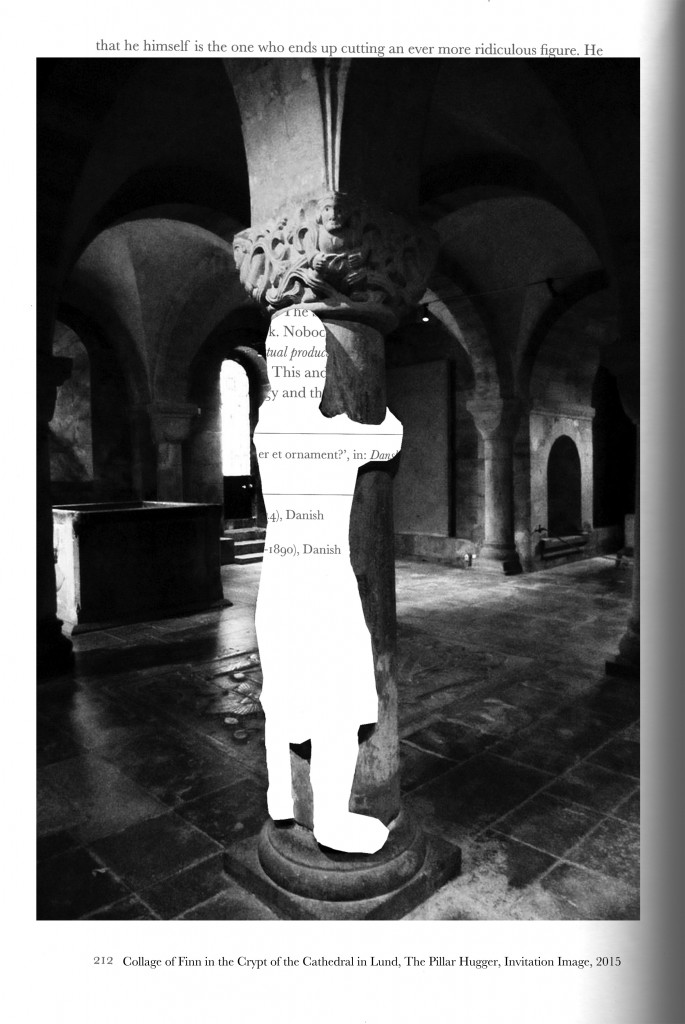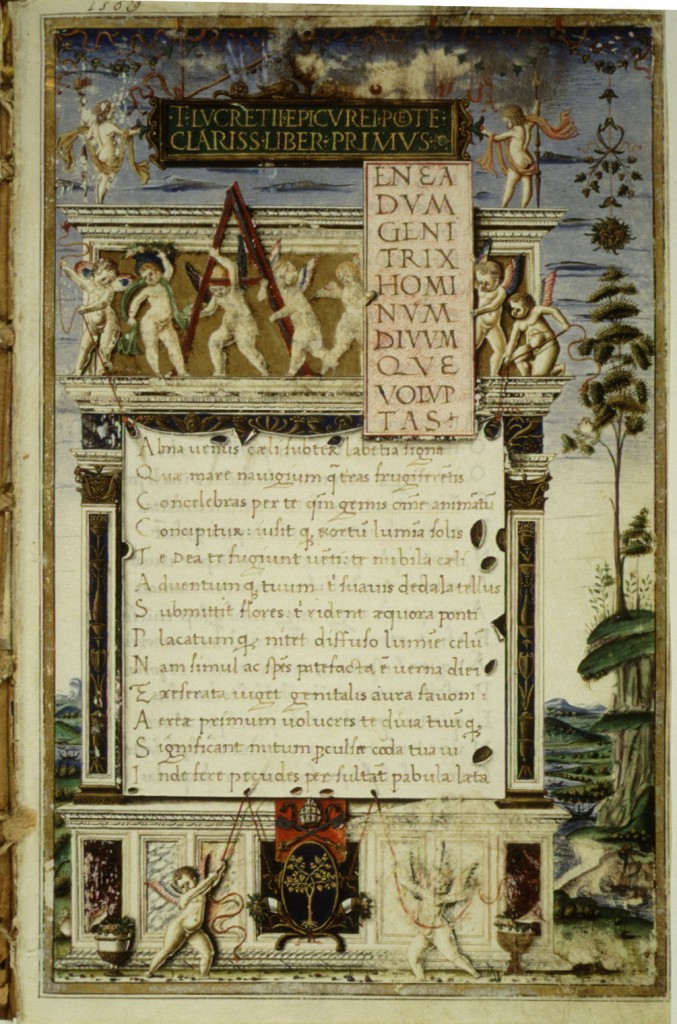PILLAR HUGGERS – A WORKSHOP AND EXHIBITION AT OR GALLERY, BERLIN
with Antonis Pittas, Johann Arens, Jay Tan, Klaus Weber, Christoph Keller, Hilde de Bruijn, Shannon Bool, Hadley+Maxwell
January 23 – April 18, 2015
Reception Friday, January 23, 7:30PM
Curated by Hilde de Bruijn, Shannon Bool and Hadley+Maxwell
The Danish experimental artist and thinker Asger Jorn (1914-1973), well-known as one of the driving forces of Cobra (1948-1951) and L’Internationale Situationniste (1957-1972) was a fierce collaborator, always looking for international exchange and discussions, facilitating collective work, magazines, and exhibitions. With great drive and ambition Jorn also wrote numerous books and articles envisioning, from an artistic point of view, ‘the first complete revision of the existing philosophical system’. Jorn believed that art is not derived from an ideology or worldview, but is the direct expression of an attitude towards life, belonging to the fundamental level of work and production. In line with this, Jorn combined in his writings ideas from a wide range of disciplines including politics, physics, economics, philosophy, anthropology, structuralism and art theory. He brought these various interests together via unconventional methods and in a vast variety of forms, in search of a comprehensive theory of art and life.
The architectural figure of the pillar-hugger as it appears in Jorn’s 12th Century Stone Sculptures of Scania1 represents a character whose body has become petrified while attempting to tear down a Cathedral by its vertical supports. A small group of artists have been invited to occupy the position of Pillar Huggers for a one-day visual symposium at Or Gallery Berlin where their work will form the material of their conversation. Transposing Jorn’s definition of a materialist attitude toward making art (as he articulates in the essay ‘What is Ornament’ (1948)) to exhibition-making, the artists are asked to animate the position of the body who, through its transformation into the inorganic, becomes the support for the very same edifice it attempts to destroy. How can we reconcile the compulsion to ornament with a resistance to the compulsion to make an exhibition? Can we avoid the exhibition as monumental decoration by approaching the encounter of and between artwork with the spirit of Jorn’s conception of vandalism and the spontaneous arabesque?
The remnants of the workshop opened to the public at 7:30 pm on January 23, 2015, and have also resulted in the visual essay What is Jornament? (published on this blog). The text is taken from the book Fraternité Avant Tout – Asger Jorn’s writings on art and architecture, 1938-1958. Editor: Ruth Baumeister. Translator: Paul Larkin.
Publisher: 010 Publishers.
—————
[1] The book traces the infiltration of a non-Christian iconography of pillar-huggers, beard-pullers, and double-heads in the decorative programs of churches built in the aftermath of pagan Scania by the recently converted kingdom of Denmark around the year 1000.
About the artists:
Klaus Weber is an artist, who lives and works in Berlin, he has shown extensively in both Europe and the United Sates. He conceives works across a variety of media and spatial units, which are often based on multifaceted technological interconnections and intricately organized production processes. Yet, by purposely manipulating everyday structures, the tracing of deviations and the exploration of the impossible, they undermine the metaphorical and actual power of a functionalist rationality. In doing this, Weber repetitively uses images of nature, and explores the sustainable potential of the untamable in a humorous and anarchic manner. Weber has had institutional solo shows at the Fondazione Morra Greco in Naples, the Nottingham Contemporary, the Secession in Vienna, the Hayward Gallery in London, as well as the Kunstverein in Hamburg. The artist has participated in group shows at the MOCA, Los Angeles, the Mori Museum in Tokyo and at the KW Institute for Contemporary Art, Berlin. Weber is represented by Andrew Kreps Gallery in NY and Herald St Gallery in London.
Shannon Bool (1972, Canada) originally from Vancouver Island, she attended Emily Carr University before studying in New York, Frankfurt and moving to Berlin were she lives and works. Solo exhibitions include: The Fourth Wall Through the Third Eye, Galerie Kadel Willborn, Düsseldorf; Walk Like an Etruscan, Daniel Faria Gallery, Toronto (2013); The Inverted Harem II, Bonner Kunstverein (2011); CRAC Alsace, Altkirch, France; The Inverted Harem, GAK-Gesellschaft für Aktuelle Kunst, Bremen (2010); RMIT Project Space, Melbourne, Australia (2008). Group exhibitions include MMK2 Boom She Boom, Works from the MMK Collection, Frankfurt; The Klöntal Triennale, Kunsthaus Glarus, Switzerland (2014); Soft Pictures, Fondazione Sandretto Re Rebaugengo, Turin; Painting Forever!, KW, Berlin; Justina M. Barnicke Gallery, Toronto (2013); the Sprengel Museum, Hannover (2012); 7×14, Kunsthalle Baden-Baden; Tactical Support, Gallery Tracy Williams, New York; Rock Opera, CACP Museum of Contemporary Art, Bordeaux (2009); Drawing on Sculpture: Graphic Interventions on the Photographic Surface, Henry Moore Institute, Leeds (2007); Make Your Move, Projects Arts Centre, Dublin; Spiralen der Erinnerung, Kunstverein in Hamburg; Carbonic Anhydride, Galerie Max Hetzler, Berlin (2006). Work is held in the collections of Berlinische Galerie Landesmuseum Fur Moderne Kunst, Fotografie und Architektur, Berlin; MMK Museum fur Modern Kunst, Frankfurt am Main; Lenbachhaus, Munich, and the Saatchi Collection, London. She is represented by Kadel Willborn Gallery in Düsseldorf and Daniel Faria Gallery, Toronto.
Johann Arens (born in Aachen, Germany 1981). He uses installation and video to survey the documentary properties of public interiors. By systematically re-editing the hardware of a location he draws up an abstract inventory of the social textures inherent in the site. His work is an enquiry into the role of human interfaces, the desire to touch artefacts and the mechanisms of user behaviour. After graduating from the Gerrit Rietveld Academy in Amsterdam, he received a stipend by the Netherlands Foundation of Visual Arts to complete his MFA in Fine Arts at Goldsmith, University of London. Since then he has worked on public commissions assigned by Arnolfini / Art and the Public Realm, Bristol, Letchworth Heritage Foundation and Jerwood Foundation London. In 2013 he has been awarded the Rome Fellowship in Contemporary Art by the British Academy and has recently started his residency at the Rijksakademie in Amsterdam.
Recent solo shows include ‘Internet Centre & Habesha Grocery’, Paradise Row, London; ‘Apple and Pear’, ASC Gallery, London; ‘Effect Rating’ De Service Garage, Amsterdam. Recent group shows include ‘New Contemporaries’, ICA London; ‘No Soul For Sale’ Festival, Tate Modern, London; ‘A useful-looking useless object’,Sierra Metro, Edinburgh; ‘I’ll explain you everythiinnngggg’, Chert, Berlin; ‘Hard Copy’, Pastificio Cerere, Rome, 2014 and ‘TTTT’, Jerwood Space, London.
Antonis Pittas (1973, Greece, lives and works in Amsterdam). As an artist, he mainly creates context-sensitive spatial installations, which are in formed by architecture, art-historical references, the performative aspects of installation art, and its social dynamics. Recent solo exhibitions, include: montage at Annet Gelink Gallery, Amsterdam, 2014, Performing Silence De Nederlandsche Bank (DNB), 2013, Amsterdam, Retroactive at the Hessel Museum of Art & CCS Galleries Bard College, NY, 2011/2012, Landart at the Benaki Museum, Athens, 2012, Untitled (this is a historic opportunity for us), at the Van Abbemuseum in Eindhoven, 2010, Next to his art practice, for the last seven years Pittas has been a teacher at the Rietveld Academie in Amsterdam, in 2014 semester professor in university of Hildesheim in Hildesheim as well as a guest teacher in many academy’s in Europe and U.S, Antonis Pittas is represented by Annet Gelink Gallery, Amsterdam
Jay Tan (1982, Croydon, UK, lives and works in Amsterdam) often uses hobbyist approaches and materials in her sculptures, installations and performances, to produce works in which tactility and basic mechanics perform key roles. We are participants in complex choreographies (histories, politics) where the most measurable properties and forces of the material world produce, fold into, collide with and emerge from our laws, languages and loves. Jay graduated from the Master of Fine Art Programme at the Piet Zwart Institute, Rotterdam in 2010. She has recently participated in group shows at Holly Bush Gardens, London, Karst Gallery, Plymouth, Camden Art Centre, London and PLAYTIME, the Rennes Biennale. Solo presentations include “The Work is Spun…”Rongwrong, Amsterdam, “The Retired Engineer” at the Witte de With Centre For Contemporary Art, Rotterdam and “You Can Stand and Watch Or Spar” Trapéz Gallery, Budapest. She is currently a resident at the Rijksakademie van Beelende Kunst, Amsterdam
Hilde de Bruijn (1971, NL, lives and works in Amsterdam) is a freelance curator and a curator at the Cobra Museum of Modern Art, Amstelveen. Her main freelance activity at the moment is a curatorial research into the writing and thinking of Asger Jorn (1914-1973) which builds a starting point to re-think issues in contemporary artistic and discursive practices – see also www.hildegoesasger.org. She is the co-editor of ‘ Archive Crisis’ , an artists´ book by Stefanos Tsivopoulos, designe Node and to be published by Japsam Books in Autumn 2015. Between 2007 and 2010 she was Head of Exhibitions at SMART Project Space, Amsterdam. She was an advisor for the NL Film Fund, the Mondriaan Foundation and City of Utrecht.
Hadley+Maxwell (artists duo since 1997, Canada, live and work in Berlin). Hadley+Maxwell’s installations, performances and writings, employ diverse media to rework iconic images and traditional forms as they are expressed in pop-cultural, artistic and political movements. They cut into reified narratives via direct touch, transposition and refiguration, putting into play the absences cast in relief.
Hadley+Maxwell have been collaborating since they met in Vancouver, Canada, in 1997. Public presentations of their work have included solo exhibitions at Artspeak (Vancouver), Contemporary Art Gallery (Vancouver), Künstlerhaus Bethanien (Berlin), Kunstverein Göttingen (Germany), Smart Project Space (Amsterdam), and Project Art Centre, Dublin, and group exhibitions at galleries and festivals including the Vancouver Art Gallery, Kunstraum München, the Power Plant (Toronto), the National Gallery of Canada, Taipei Fine Arts Museum, the Seattle Art Museum, La Kunsthalle Mulhouse (France), Witte de With (Rotterdam), the 4th Marrakech Biennale and the 19th Biennale of Sydney. They are represented by Jessica Bradley, Toronto, and live and work in Berlin, Germany.
Christoph Keller, born 1967 in Freiburg/Breisgau, studied Mathematics, Physics and Hydrology in Freiburg, Berlin and Santiago de Chile, at the University of Arts, Berlin and at the Academy of Media Arts, Cologne. Selected solo exhibitions and projects include: Small Survey on Nothingness, Schering Stiftung, Berlin (July 5 – October 4, 2014);Expedition Bus – Shaman Travel, Presentation at abc Berlin (2012); Aether between cosmology and consciousness, Nouveau Festival Du Centre Pompidou, Paris (2011); Voyages Extraordinaires, CRAC Alsace Lorraine, Altkirch (2010), Observatorium, Kunstverein Braunschweig (2008).Recent group exhibitions include: Realität und Fiktion, Villa Schöningen, Potsdam (2013); Ghostbusters – or how to stress photography, Kunsthal Charlottenborg, Copenhagen (2013); Virtuosity – A concert on skill and disruption, strength and nonchalance, morale and cheating, Berliner Philharmonie, Berlin (2013); L’Institut des archives sauvages, Villa Arson, Nice (2012) and The Worldly House, Archive for dOCUMENTA (13) (2012).
The exhibition at Or Gallery took place in collaboration with the Embassy of Canada.
WHAT IS JORNAMENT?
What is Jornament? is a visual essay created by artists Shannon Bool, Hadley+Maxwell and Jay Tan making use of enlarged copies of the English translation of Asger Jorn’s text ‘What is an Ornament?’ from 1948. The text is taken from the book “Fraternité Avant Tout – Asger Jorn’s writings on art and architecture, 1938-1958.” Editor: Ruth Baumeister. Translator: Paul Larkin. Publisher:010 Publishers.
ALFRED JARRY AND ASGER JORN: THE EPICUREAN INFLUENCE AS SOCIAL ‘SWERVE’, BY KOSTIS VELONIS
Within the framework of my research into Asger Jorn´s writing and thinking I organize public and semi-public sessions with special guests at a variety of venues. The guest´s practice, knowledge, insights, or responses are informative to my research, or steer the direction I take on a particular topic. The sessions also often respond to the context of the hosting institution, or to a specific request. Making the sessions public is a way to share and enter into a dialogue with the audiences.
On January 8, 2016 the session ‘Asger Jorn: Thinking in Threes’ was hosted by Circuits and Currents, the Project Space of the Athens School of Fine Art. Two Athens-based artists contributed to this session. Yiannis Isidorou with a performance-text which can be found in the Public Sessions section of this blog, and Kostis Velonis with the text below.
Kostis Velonis received his Doctorate in architecture from the N.T.U.A University of Athens (2009). He studied Cultural Studies (MRes) at the London Consortium and Visual Arts at the Paris VIII University, (Maitrise, D.E.A). Recent shows (selections 2014-15): This probably will not work, Lothringer13 – Städtische Kunsthalle München, Munich 2015; Adventures of the Black Square: Abstract Art and Society 1915 – 2015, Whitechapel Gallery, London 2014; The Theater of the World, Museo Tamayo, Mexico City; This is not my Beautiful House, Kunsthalle Athena, Athens; No Country for Young Men, BOZAR, Brussels.
As the current conditions in global markets are in a potentially unstable situation the activation of Epicurus’ (341-270 BC) swerve (“Clinamen”) proves to be of some interest, since it introduces us into a mobile and liberating perception of things that corresponds to the risks of the financial hyper-capitalist structure. Epicurus’ positions are firmly opposed to Platonic cosmogony, given that in Plato’s only text on nature, Timaeus, real nature is a perfectly organized structure consisting of geometrical elements, such as spheres, pyramids, cubes, etc. In many ways, quantum mechanics, which describes the behavior of matter on molecular and atomic level, can be interpreted as a continuation of the atomic theory expounded by the philosophers of Atomism (Democritus, Leucippus), of which a late proponent, during the Hellenistic period, was Epicurus himself. The philosopher from Samos tried to relate physics and cosmogony with human nature. We would have to wait many centuries until modern physics confirmed the ancient materialists’ speculation on the atomic composition of matter.
Modern physics explains matter recognizing that atoms move in unpredictable directions. Epicurus idea of continually moving atoms that swerve (clinamen), following the inclination of a fundamental randomness, is already confirmed by the history of the discipline of quantum physics.
Lucretian deviation
In short, according to Epicurus, there are only two fundamental elements in the universe: atoms and void. The latter considered by Epicurus as necessary for the movement of bodies. His Roman descendant, Lucretius (99 BC-55 BC), in his philosophical poem – a treatise of physics, actually – under the general title On the Nature of Things (De Rerum Natura), specifies that “…when the atoms are being drawn downward through the void by their property of weight, at absolutely unpredictable times and places, they deflect slightly from their straight course, to a degree that could be described as no more than a shift of movement“.[i]
Lucretius also examines the issue of the swerve of atoms. He thinks that without this slight deviation of atoms from their usual movement, “all would fall downward through the unfathomable void like drops of rain”, and no contact would be possible, no collision among the original elements, and thus nature would never create anything at all. Lucretius wonders: “…if new movements arise from the old in unalterable succession, if there is no atomic swerve to initiate movement that can annul the decrees of destiny and prevent the existence of an endless chain of causation, what is the source of this free will possessed by living creatures all over the earth?”[ii] It is this “natural” deviation that allows a degree of arbitrariness to the universe and thus introduces the idea of contingency.
The principle of indeterminacy appears to be important for the practice of creative expression, as it constitutes a field where human freedom can be exercised. This liberating indeterminacy subverts deterministic conceptions, the causal perception of the world through the tyrannical chain of causes and effects, and, finally, the Stoic idea of an unavoidable – according to a common belief – fate. All Epicurean thinkers agree on the idea of a free will that does not obey to fate; that is, a will that determines our actions, beyond any kind of predetermination.
Modern deviation: Ubu Roi
The Greek origin of deviation could not have been restricted to antiquity, since it touches upon modern scientific assumptions of physics, and all the more so when one attempts at integrating it with the multifarious logic of modernity. Can this volatile condition of matter, and more specifically of atomic deviation, function as a synecdoche in terms of a theatrical and visual avant garde, through formalist formulations no less?
An “oblique” Epicurean “deviation” can be attested in a Promethean personage of modernity, the Symbolist writer Alfred Jarry (1873-1907), as well as in the writings and the visual work of the Situationist Asger Jorn (1914-1973).
In Jarry’s play Ubu Roi (King Ubu, 1896), an inhuman, brutal and overgrown major usurps the throne of the king of Poland. During the whole play, Jarry’s antihero covers his head and body with a large robe, on which there is the design of a lengthy spiral that winds up on his belly. The term invented by the French writer for this spiral is la gidouille, which indeed denotes a spiral, though not in the sense of a strict, linear geometrical construction, but in a more relaxed sense, as if it was, materially speaking, a formerly taut and now dilapidated hose. This figure is identified with Ubu’s protruding stomach.
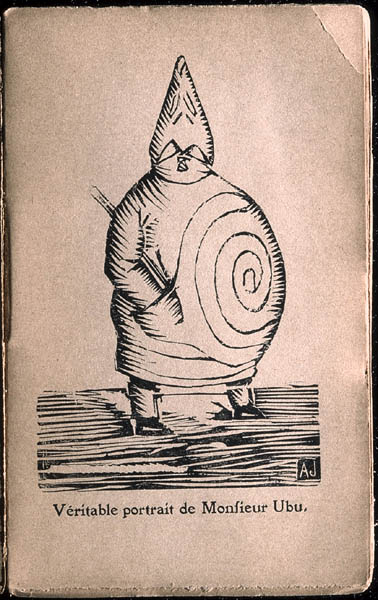
Alfred Jarry, “Véritable portrait de Monsieur Ubu”, woodcut for Ubu Roi, Paris, Éditions du Mercure de France, 1896
It is interesting to note the relation between Ubu’s body architecture, his gestures and the spiral on his robe. The spiral on Ubu’s belly alludes to the qualities of Clinamen – that is, to deviation from a straight line, to deviant movement. It could be the graphic illustration of an atom’s course in the void, an atom that has completed an elliptical orbit and now springs to infinity, deviating from any calculation imaginable.
Ubu, the ambitious major, does not content himself with fate; on the contrary, he follows and asserts his becoming, shaping it in his own way. What matters is how he accomplishes his goals, using base instincts such as passion for crime, an inclination to constant intrigues and all kinds of vices. Can the overgrown Ubu, with his ever-expanding belly highlighted by the spiral design, be a model for nihilist thinkers? Since pleasure is so intrinsically ephemeral, we ‘d better not go without it at all: this could be what Père Ubu has constantly in mind before going on with his next brutal act.
Yet from the point of view of Epicureanism, this is very far from a model of pleasure accompanied by a constant disposition of tranquility, in the sense of the absence of bodily pain and mental anxiety. Thus, one should not confuse real pleasure, as theorized by Epicurus, with the pleasures of the depraved. Within the context of Ancient Greek philosophical schools, Ubu is a Cyrenaic. He is a modern caricature of Aristippus of Cyrene, who taught that the future seems so uncertain that it makes no sense to postpone the moment of a fleeting pleasure. Aristippus reminds us indirectly the logic of Jarry’s hero, through his views that the object of desire and pleasure is irrelevant, and that what matters is just the degree of pleasure and the intensity of the feeling of satisfaction.[iii]
Not only does not Major Ubu, who usurps the throne of the king of Poland, wish tranquility, but he consciously pursues this fleeting pleasure that, for the anti-conformist Jarry, is an ambiguous model / anti-model of himself. In reality, Ubu is the Physics teacher Félix-Frédéric Hébert, in Jarry’s high school in Rennes, whom Jarry used to make fun of, along with his fellow students, in an impromptu marionette theater. The full-bodied professor Hébert incarnates all the negative qualities that young Jarry wanted to criticize, and in the stories of these French teenagers he becomes King Ubu.
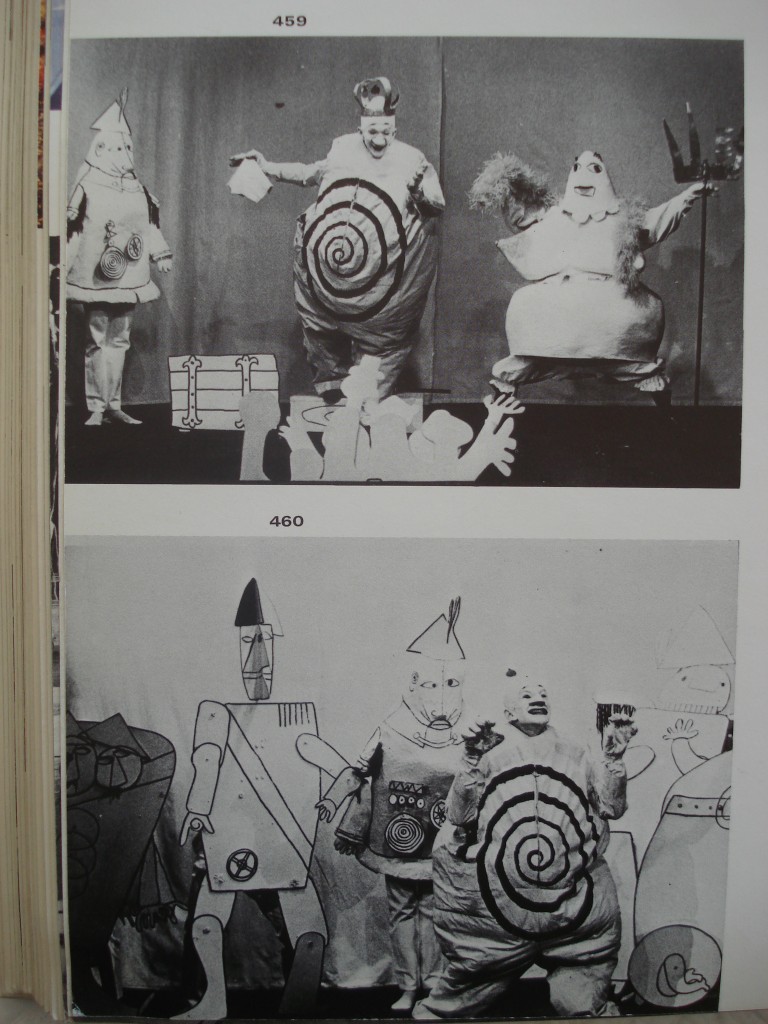
Alfred Jarry’s “Ubu Roi”, stage design by Franciszka Themerson, Dir. by Michael Meschke, Stockholm, Marionetteatern, 1964
Jarry himself refers to the word clinamen, which is the Latin version of Epicurean deviation, in his pataphysical calendar, where it coincides with the month of August. In a less cryptic fashion, the Latin clinamen-deviation is used in Jarry’s 1898 novella Gestes et opinions du docteur Faustroll pataphysicien: Roman néo-scientifique suivi de Spéculations, as a subchapter to describe a painting machine (“Machine à peindre”).
The painting machine is a metaphor of a conscious spatial deviation from a straight line, which “…like a spinning top, it dashed itself against the pillars, swayed and veered in infinitely varied directions, and followed its own whim in blowing onto the walls’ canvas the succession of primary colours…”.[iv] The painting machine, like a “modern deluge of the Universal Seine” is “the unforeseen beast Clinamen ejaculated onto the walls of its universe”.[v] Clinamen, spreading its colors everywhere, could be a metonymic portrait of Jarry, as well as an illustration, in terms of mechanics, of the conditions of the Universe, where atoms are dispersed from a point of departure towards an uncompromised deviation. In Docteur Faustroll, Jarry finds his real model as the inventor of the science of pataphysics, the “science of imaginary solutions”.[vi]
The ornament and the arabesque of Asger Jorn
Although familiar with the literature and the philosophy of Jarry’s discourse, Asger Jorn, who wasn’t a memer of the College but was who was declared ‘Commandeur Exquis of the Ordre de la Grande Gidouille’ wrote in 1961 an article for the Intellectual political movement L’Internationale Situationniste (IS) where he criticized pataphysics for having the qualities of a religion. But his isolated criticism of Jarry’s pataphysics, which was followed by a commendatory note on the part of the publisher, Mr. Guy Debord, cannot possibly annul the influences that nurtured the generation of COBRA (International group of artists and poets, 1948-1951) and the IS.[vii]
An indication of this influence that shows an Epicurean vein in Jorn’s worldview is found in a text entitled “What is an ornament?”(1948), which reveals how close Jorn is to Jarry’s ideas, yet at the same time how much he differentiates himself from them. In this article, he describes “the wave formation matter”, which is the result of the interconnection between the two substances that are active in mutual movement.[viii] The interaction of the different waves through the formalist interpretation can be attributed to the qualities of the arabesque.
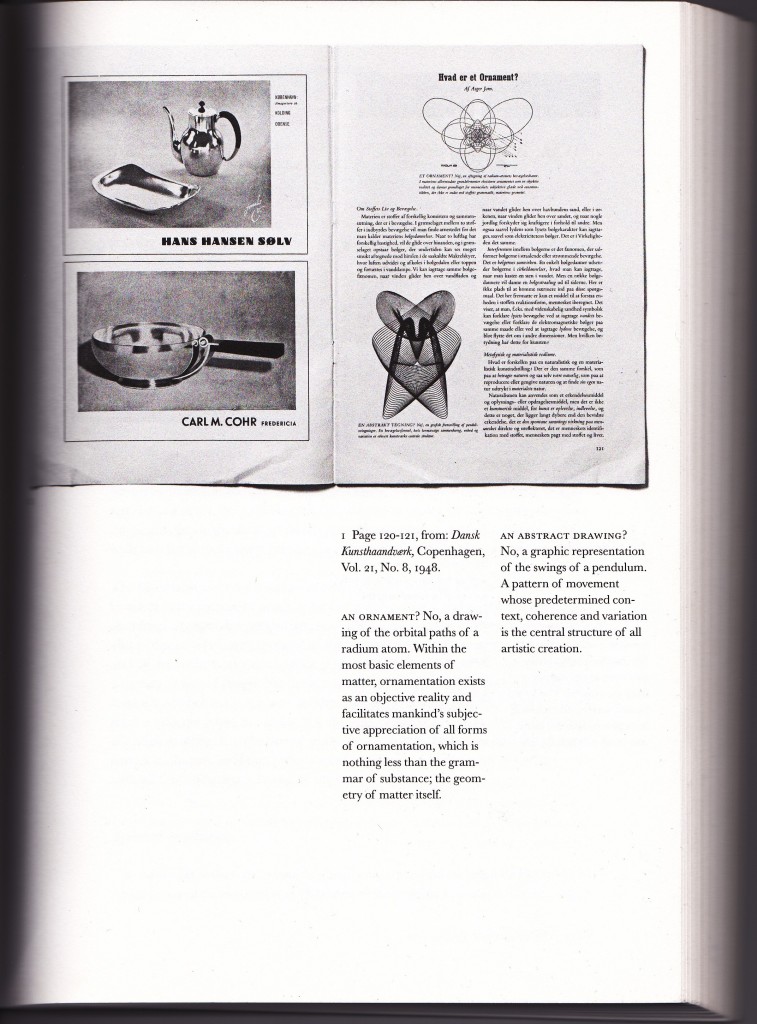
Asger Jorn, page from the essay of Asger Jorn’ ‘What is an Ornament?’ (1948), in Fraternité Avant Tout: Asger Jorn’s Writings on Art and Architecture, 1938-1958, edited by Ruth Baumeister, translated by Paul Larkin (Rotterdam: 010 Publishers, 2011), p.197
From the outset, Jorn gives a summary view of his positions for a “grammar of substance” offered by the philosophy of decoration. More specifically, underneath a picture included in his article, he writes: “An ornament? No, a drawing of the orbital paths of a radium atom”.The physical atom as an ornament and the ornament as a construction that obeys to the laws of physics is an opening to a causality of the deviation of atoms and their reflections towards larger forms, which are destined by nature to move dynamically. The ornament is not programmed to repeat itself unchanged; it changes shape according to the circumstances.
The ingenious Jorn explains colorfully the tendency of matter to result in the organic form of arabesque – similar in this with Lucretius’ clinamen. The shape of the arabesque also comprises Jarry’s gidouille, thus showing immediately an affinity in the treatment of form. Jorn’s descriptions attribute to the arabesques qualities that Epicurus would seek for atoms in the void, spreading everywhere, since anything that moves is destined to take shape, or else to extend linearly as an arabesque in the time-space continuum. At the same time, each arabesque, reacts with other arabesques which have described longer trajectories and “which in turn engage with all that we describe as substances or matter, and of which we only know that there are a myriad arabesque movements – right from the ingenious systems holding atoms and molecules together up to the movement of the planets in space – all circling the solar system’s invisible core”.[ix]
Arabesques can be perceived as the intelligent system of atoms and molecules, and they even explain the movement of plants in space. Accordingly, “we can observe the flowing seas, the evaporation taking place across both land and water, after which it rises to the heavens only to cool once again and condense to rainwater, falling back to the ground so as to join with streams and rivers where the cycle from sea to clouds will start again”.[x] Jorn offers with explicative lyricism the fundamental values of decoration as a life motif. But do arabesques, the quality of movement aside, also have the logic of deviation, as described by Lucretius with regard to the movements of atoms?
Jorn writes: “People rise from their beds in the morning and their pattern of wandering throughout the day describes their own arabesque of footsteps across the earth. They follow the same routes day after day”. And further on: “their footsteps become pathways, which branch out across the terrain and which show where man has left his tracks, and then others go along the same tracks and these become roadways, reflecting the abundance of life – arabesques in man”.[xi] While this description could be attributed to a thinker that sees behind the phenomena visions that repeat themselves identically in time, following a stringent Platonic logic, the answer is finally given by Jorn himself, when he argues that “static forms … have a tendency to become dynamic, because the presentation of dynamic art is the natural way of things”.[xii]
Jorn’s difference compared with Jarry is that the former tries to find a Cartesian acceptance in the dynamic composition of matter, to formalize the Epicurean deviation with the motif of arabesque, although he is no more able to define the limits of this extension. Lucretius expands generously Epicurus’ wisdom, bringing to mind Jorn’s methodology, regarding the traces of arabesques from the small to the grand scale: “Certainly the primary elements did not intentionally and with acute intelligence dispose themselves in their respective positions, nor did they covenant to produce their respective motions; but because through the universe from time everlasting countless numbers of them, buffeted and impelled by blows, have shifted in countless ways, experimentation with every kind of movement and combination has at last resulted in arrangements such as those that created and compose our world…”.[xiii]
Both Jarry and Jorn try to speak, each one in his own terms, about deviation as a fundamental element of free will, which cannot but reflect the Epicurean view of the formation of the Universe. Movements with no connection or movements that deviate from their expected precise recurrence, thus defining what we call contingency, constitute Jarry’s way of philosophizing, through Dr. Faustroll, as well as his nihilistic caricaturizing, through the lame materialist major Ubu.
In the end, if deviation in the sense of declinatio or clinamen corresponds, in terms of social history, to a deviant course, the inclination of which is translated into the subject’s free will, both Jarry, with the blatant destructivity that runs through his writings, and Jorn, with his insistence on an experimental and anarchic creativity, seem to substitute for the claim of an “intelligent design” or the traditional view of God’s omnipotence the subversive qualities of matter. Both expound, though in different ways, a modern-day paganism, compelled by “the presence of a distinct boredom”, going against the supreme will of a god, a doctrine, a predictable existence. Jorn, in particular, advocates“the pure desire for the unexpected, the thirst for surprise… the inclination to difference… the flânerie”.[xiv]
Epicurus’ wisdom is of vital importance for a “deviant” freedom in existential terms. Since all cosmic order springs from this deviation, even the concepts used by the pataphysicians can be moved away from the pragmatist restraint of language, especially if one thinks of Jarry’s exuberant neologisms.[xv] Empirical functions such as a sudden collapse, a violent breakup, a change of course-dislocation, reconstruction or the paradox of love help us, among many others, understand how the Epicurean swerve in physics and philosophy can have an immediate impact on the world of human relations.
[i] Lucretius, On the Nature of Things (De Rerum Natura), translated, with an introduction and notes by Martin Ferguson Smith (Indianapolis & Cambridge: Hackett, 1969), Book II, 216.
[ii] Idid., Book II, 254.
[iii] Despite the similarities between Epicureanism and Cyrenaicism, these two schools constructed very different systems of thought. See Jean Paul Dumont, La philosophie antique (Paris: Presses Universitaires de France, 2003), and W. Windelband-H.Heimsoeth, Handbook of History of Philosophy [Enchiridio Istorias tis Filosofias], Greek translation by Ν. Μ. Skouteropoulos (Athens: ΜΙΕΤ, 1991).
[iv] Gestes et opinions du docteur Faustroll pataphysicien: Roman néo-scientifique suivi de Spéculations (Paris: Charpentier, 1911). I quote here the English edition: Alfred Jarry, Exploits & Opinions of Dr. Faustroll, Pataphysician, trans. by Simon Watson Taylor, Introduction by Roger Shattuck (Boston: Exact Change, 1996), p. 88.
[v] Jarry, Exploits & Opinions of Dr. Faustroll, Pataphysician, op. cit., p. 88-89.
[vi] “Pataphysics … is the science of imaginary solutions, which symbolically attributes the properties of objects, described by their virtuality, to their lineaments”. Ibid., p. 22.
[vii] Asger Jorn, “La pataphysique: Une religion en formation”, Internationale Situationiste 6 (August) 1961, p. 29-32; included in Pataphysics: A Useless Guide, by Andrew Hugill (Cambridge, Mass. & London: The MIT Press, 2012).
[viii] Asger Jorn, “What is an Ornament?” (1948), in Fraternité Avant Tout: Asger Jorn’s Writings on Art and Architecture, 1938-1958, edited by Ruth Baumeister, translated by Paul Larkin (Rotterdam: 010 Publishers, 2011).
[ix] Jorn, “What is an Ornament?”, op. cit., p. 207
[x] Ibid., p. 207.
[xi] Ibid., p. 207.
[xii] Ibid., p. 203.
[xiii] Lucretius, On the Nature of Things, op. cit., Book I, 1008.
[xiv] Asger Jorn, ‘Charme et mécanique, sur le rôle du vandalisme dans l’histoire des arts’, in Asger Jorn “Pour la Forme. Ebauche d’une méthogologie des arts”, Paris, Internatioanle situationniste, 1958. English translation ‘Charms and Mechanisms’, in “Concerning Form”. An outline for a methodology of the arts”, Museum Jorn, Silkeborg, 2012.
[xv] It is interesting to note the deviation searched by Michel Serres in the field of language, when he argues that every language is a unique seed, an original distribution of parasites. He even dares to oppose consonants and vowels in order to convey the necessity of deviation. The ideal example is Ubu’s famous “Merdre” instead of “Merde” at the beginning of the First Act of Jarry’s play. Here is Serres’ argument: “Sometimes winds, breaths, composed together incline toward each other without the intervention of valves or consonants. Oui is a coil, a tress of voice. A bit free, a bit loose, undone, without the anguish of strangulation. Oui without the swarming parasites. Oui in the wind of the Paraclete. Oui in the turbulent tresses of the river. Oui finally works itself loose [se desserre]”. Michel Serres, The Parasite [Le Parasite (Paris: Grasset & Fasquelle, 1980)], trans. by Lawrence R. Schehr (Baltimore, Maryland: The Johns Hopkins University Press, 1982).
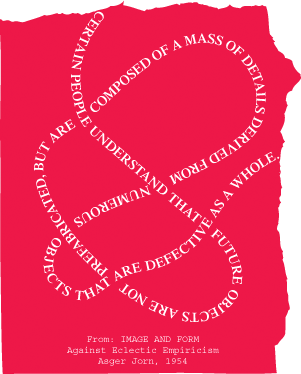
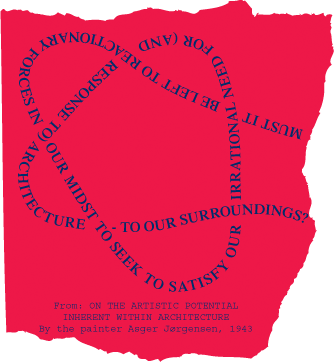
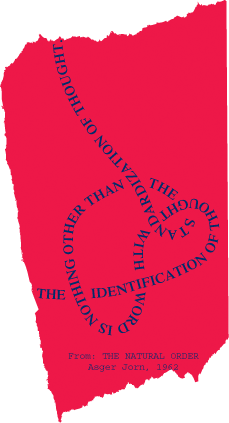
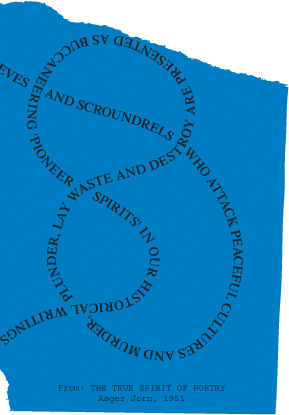
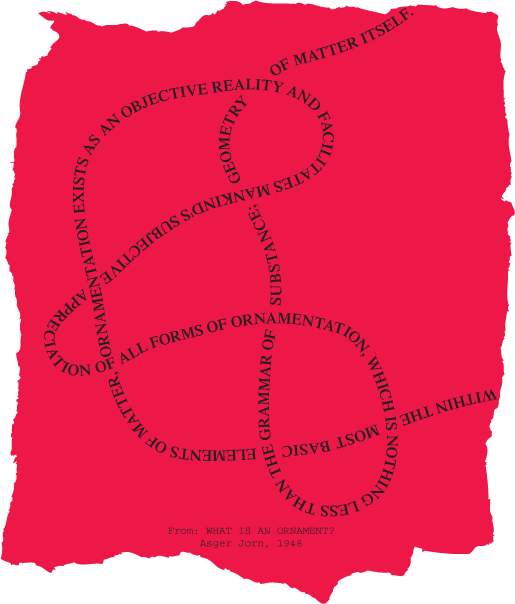
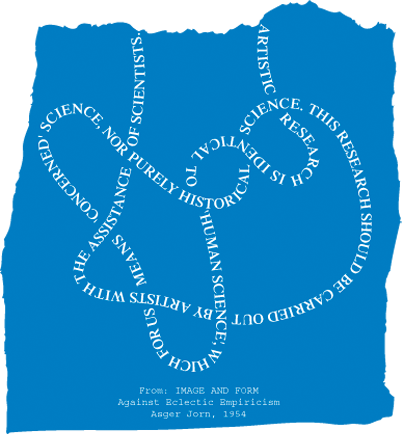
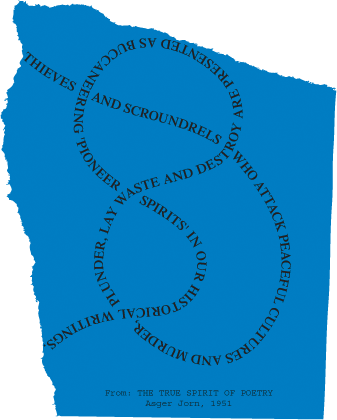
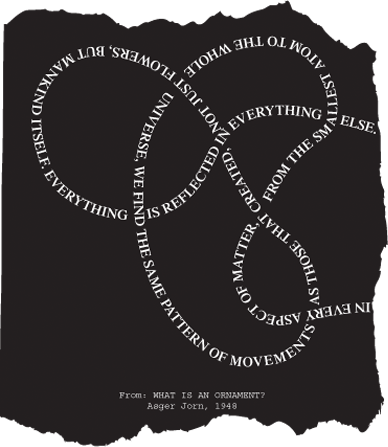
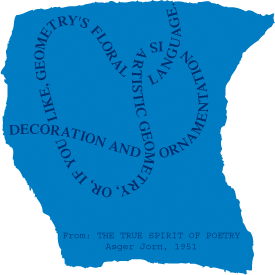
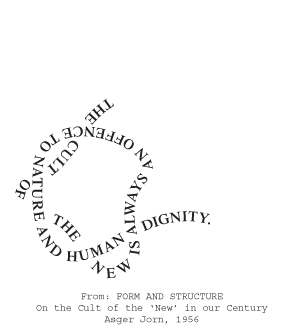
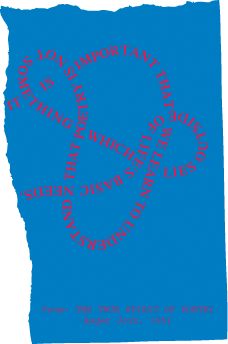
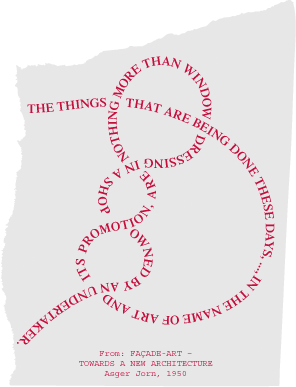
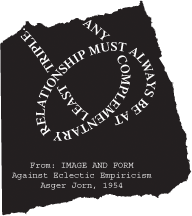
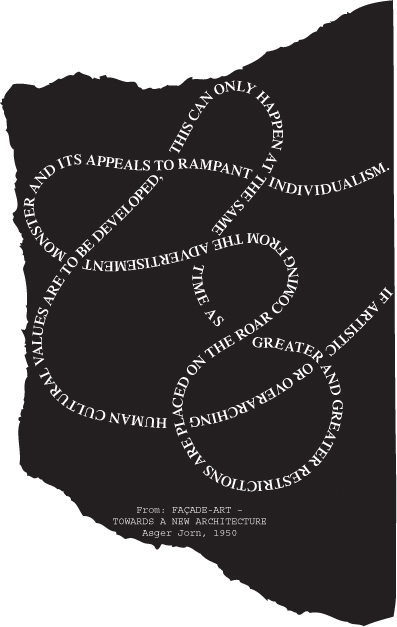
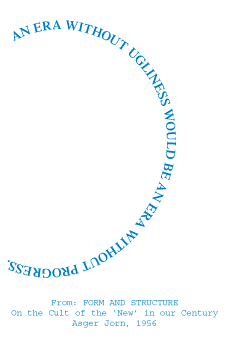
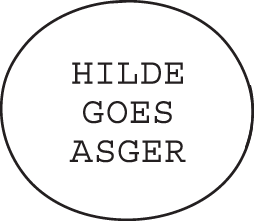
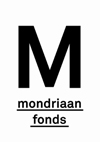
![775t[1]](https://www.hildegoesasger.org/wp-content/uploads/2015/07/775t1.jpg)
